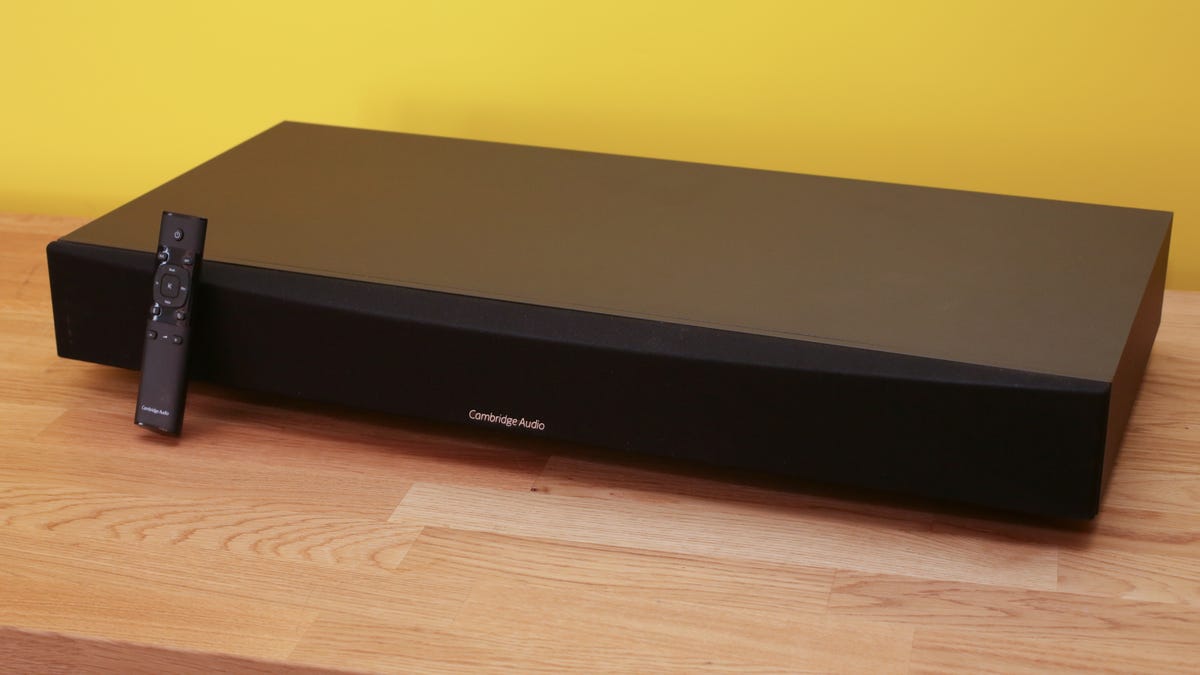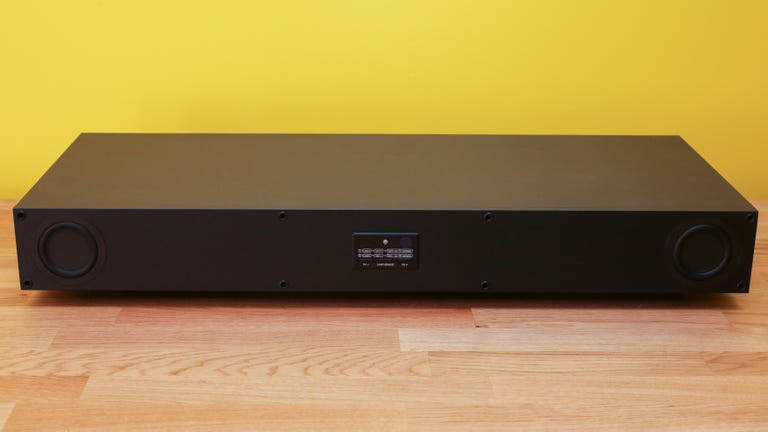 Why You Can Trust CNET
Why You Can Trust CNET Cambridge Audio TV5 review: Sound base needs sounder bass
Compared with competing sound bases, the Cambridge Audio TV5 comes up short on features and its sound feels lightweight.
Sound bar or sound base? This is probably the question you need to ask yourself if you're in the market to upgrade your TV's audio capabilities without adding a bunch of additional speakers.
The Good
The Bad
The Bottom Line
The sound base is a compelling design choice if your TV has a pedestal stand to support one, although it's a bit less elegant when paired with TVs that have feet on the ends, rather than a pedestal in the middle. Soundbases like the Cambridge TV5 are "all-in-one," with no separate subwoofer to set up, and they also don't block your TV's infrared port.
Despite a lack of features compared with its competition -- the Yamaha SRT-1000 , and, in the US, the Pioneer SP-SB03 --the plucky Cambridge does offer solid sound quality and ease of use. It's convenient, relatively affordable and simple to set up. Its main failing is an inability to match the bass impact of competing sound bases.
The Cambridge Audio TV5 is available for $399 in the United States and £299 in the UK. Australian availability is yet to be confirmed, but it's been spotted online for a hefty AU$649.
Design

There are two models in Cambridge Audio's TV lineup: the TV2 ($299) and the TV5 ($399), and they're almost identical in terms of features. The TV5 is a little bigger and offers dual 6.5-inch "subwoofers" instead of just one.
The TV5's composite wood cabinet measures 28.5 inches wide and 13.4 inches deep, which enables it to support televisions up to 66 pounds. While the speaker is relatively large, the manual suggests that if your TV's base doesn't fit on top you should move the speaker to "a lower shelf of your TV rack." Also, you may want to buy a TV rack.
The remote control is a cut above most at this level, with a whiff of the LG Magic Motion control about its tapering shape. All of the functions are easily accessible and it's easy to use.
Features
The TV5 is a 2.1-channel sound base that features two 2.25-inch Balanced Mode Radiators in addition to the aforementioned subs. Cambridge Audio's proprietary radiators are a hybrid of standard woofers and flat panel speakers that, due to their wide frequency response, don't require a separate tweeter.
Like most TV speakers the Cambridge supports Bluetooth connectivity with the addition of aptX support for potentially better sound quality.
The main inputs are optical digital, stereo RCA and 3.5mm jack. The TV5 is the first sound base or bar in its price class we've tested that lacks built-in DTS and Dolby processors. Some speakers have both, and the ones that don't always have Dolby. The TV5 has neither, so make sure your Blu-ray player, satellite, cable box and so forth can send PCM, not Bitstream digital to the TV5. If you don't the TV5 won't produce any sound. The TV5 has bass ports on its back panel so we recommend leaving at least six inches of clearance between the TV5 and the wall.
Just like the even more expensive PSB Alpha VS21 , the TV5 doesn't have bass or treble controls. The only way to tweak the sound balance is with the TV5's "Music, " "Film," "TV" and "Voice" mode settings, and the only ones that matter are "TV" and "Film." The difference between those two is fairly subtle.
Performance
We started our listening tests with CDs, and the TV5's midrange clarity was a cut above the norm for sound base speakers. As we listened bass definition was also noteworthy, but the bass didn't go all that deep, and treble detailing was slightly soft. Nothing about the sound irked us, and the TV5 can play fairly loud without strain.
Bluetooth music was detailed enough, but compared to the Pioneer SB03 it could sound a little too bright -- especially at volume. While the Cambridge Audio initially seemed exciting, we preferred the SB03's mellower balance over the long term -- especially with the Pioneer's ability to turn the sub up or down to suit the music.
Next we popped on "Avatar" for a movie sound comparison. The TV5's midrange forward tonal balance gave the impression of more detail, but the SP-SB03's sound was richer and the stereo soundstage spread wider. Returning to the TV5 was a letdown, mostly because it sounded so much smaller, contained and constrained by comparison. When those massive helicopters swoop above the terrain, their awesome power and thrust were missing in action with the TV5.
With the scenes set in the dense jungle we heard more of the textures of the plants' leaves moving in the wind, and its midrange clarity was slightly ahead of the SP-SB03's, but the SP-SB03's bigger, fuller sound was more satisfying, the TV5 lacked gravitas.
Still, the TV5's dialogue sounded articulate and full-bodied. The scene near the end of "The Hunger Games: Mockingjay, Part 1" where President Coin (Julianne Moore) gives a victory speech, the sound of her voice filling the hall was perfectly natural. When we settled down and listened to the TV5 on its own terms it was pleasant enough.
Just don't challenge the Cambridge with a concert DVD like Eminem's "Live From New York City," its built-in subwoofers inhibited the beats' oomph. If the TV5's connectivity suite included a subwoofer output jack we would have hooked up an external sub, but alas.
Conclusion
The Cambridge Audio TV5's performance is perfectly fine given the budget price, with exciting sound and ease of use among its best qualities. However if you want even better sound and more features, the Pioneer SP-SB03 and Yamaha SRT-1000 sound bases are superior performers -- especially when it comes to the sense of scale and home theater impact.




